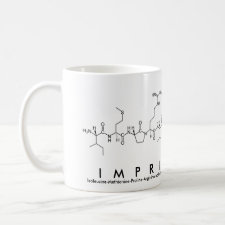
Authors: Zhang TL, Chai GP, He CX, Wang L
Article Title: Preparation of p-Hydroxybenzoic Acid-Imprinted Polymer Particulates and Application to Solid Phase Extraction.
Publication date: 2016
Journal: Chinese Journal of Applied Chemistry
Volume: 33
Issue: (2)
Page numbers: 229-237.
DOI: 10.11944/j.issn.1000-0518.2016.02.150184
Alternative URL: http://yyhx.ciac.jl.cn/EN/abstract/abstract16001.shtml
Abstract: p-Hydroxybenzoic acid (p-HBA)-imprinted polymer particulates were prepared using p-HBA as the template, acrylamide (AM) as the functional monomer and ethylene glycol dimethacrylate as the crosslinker in three different amounts of p-HBA and under two different concentrations of pre-polymerization mixtures via precipitation polymerization. Their rebinding performances for p-HBA were characterized by high-performance liquid chromatography. The results reveal that both the amounts of p-HBA and the concentrations of pre-polymerization mixtures exhibit notable influence on the binding performances of p-HBA-imprinted polymers. The p-HBA-imprinted polymer (P2) with high affinity (k'=4.01) and selectivity for p-HBA is obtained when the amount of p-HBA is 1.0 mmol, which is corresponding to the molar ratio of 1:2 (p-HBA/AM), in 37.5 mL of acetonitrile solvent. In addition, the imprinted polymer P2 was chosen as the adsorbent to make the molecularly imprinted solid phase extraction (MISPE) column and the MISPE method for the extraction of p-HBA was developed. The MISPE column capacities for p-HBA are 6.91 μg/100 mg and 1.93 μg/100 mg, respectively, which are determined under two different modes of loading samples. The rhizoma gastrodiae samples spiked with three different amounts of p-HBA are extracted and the recoveries of p-HBA range from 76.8% to 86.6%, with the RSD of 3.4%~6.2% (n=3). The results demonstrate that the p-HBA-imprinted polymer particulates prepared using AM as the functional monomer by precipitation polymerization are suitable as the adsorbent of solid phase extraction column for the selective separation and purification of p-HBA in the real sample of rhizoma gastrodiae.
Template and target information: p-hydroxybenzoic acid, p-HBA, hydroxybenzoic acid
Author keywords: p-hydroxybenzoic acid, precipitation polymerization, molecular recognition, molecularly imprinted solid phase extraction



Join the Society for Molecular Imprinting

New items RSS feed
Sign-up for e-mail updates:
Choose between receiving an occasional newsletter or more frequent e-mail alerts.
Click here to go to the sign-up page.
Is your name elemental or peptidic? Enter your name and find out by clicking either of the buttons below!
Other products you may like:
 MIPdatabase
MIPdatabase









